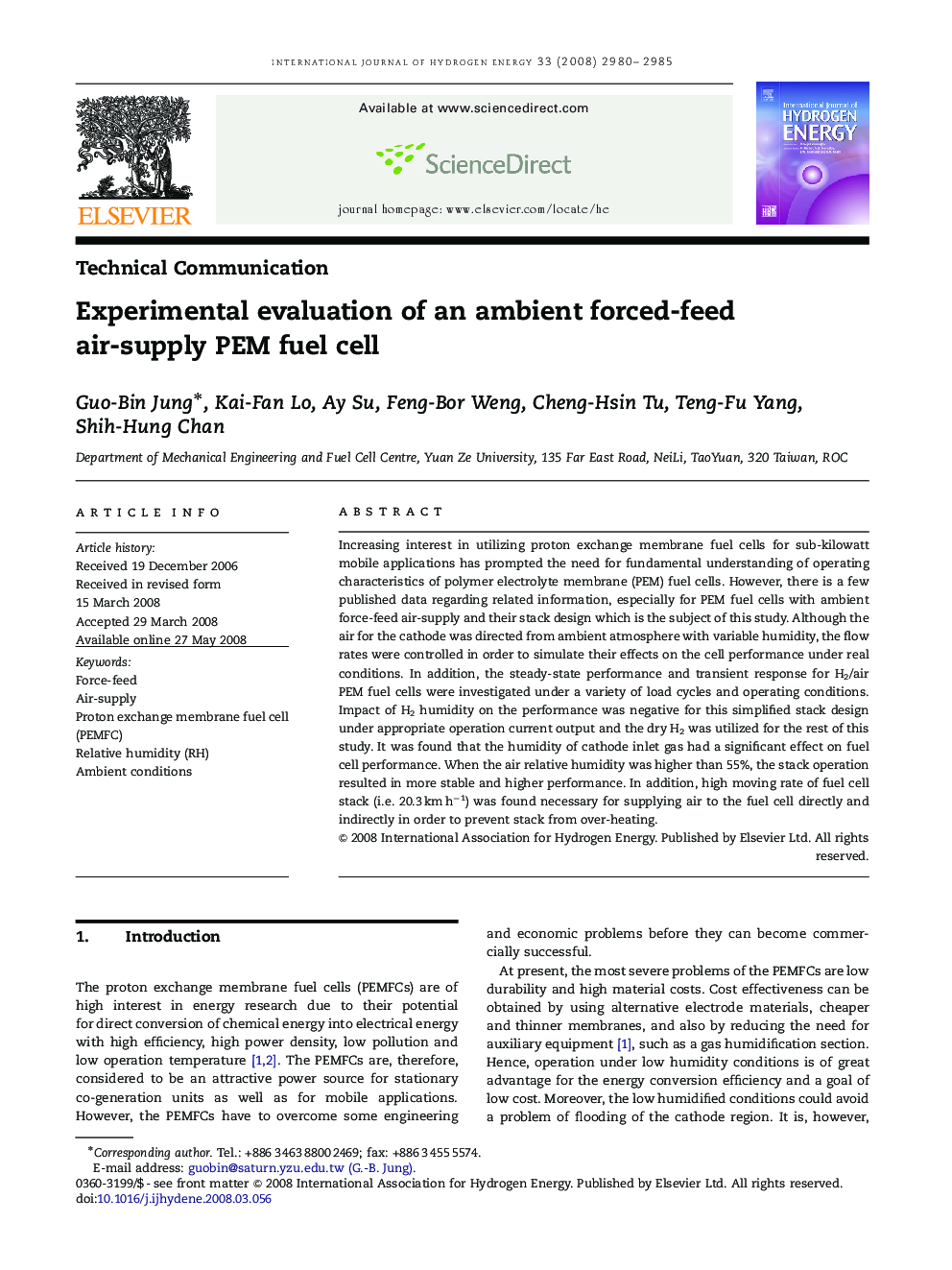| Article ID | Journal | Published Year | Pages | File Type |
|---|---|---|---|---|
| 1279585 | International Journal of Hydrogen Energy | 2008 | 6 Pages |
Increasing interest in utilizing proton exchange membrane fuel cells for sub-kilowatt mobile applications has prompted the need for fundamental understanding of operating characteristics of polymer electrolyte membrane (PEM) fuel cells. However, there is a few published data regarding related information, especially for PEM fuel cells with ambient force-feed air-supply and their stack design which is the subject of this study. Although the air for the cathode was directed from ambient atmosphere with variable humidity, the flow rates were controlled in order to simulate their effects on the cell performance under real conditions. In addition, the steady-state performance and transient response for H2/air PEM fuel cells were investigated under a variety of load cycles and operating conditions. Impact of H2 humidity on the performance was negative for this simplified stack design under appropriate operation current output and the dry H2 was utilized for the rest of this study. It was found that the humidity of cathode inlet gas had a significant effect on fuel cell performance. When the air relative humidity was higher than 55%, the stack operation resulted in more stable and higher performance. In addition, high moving rate of fuel cell stack (i.e. 20.3 km h−1) was found necessary for supplying air to the fuel cell directly and indirectly in order to prevent stack from over-heating.
